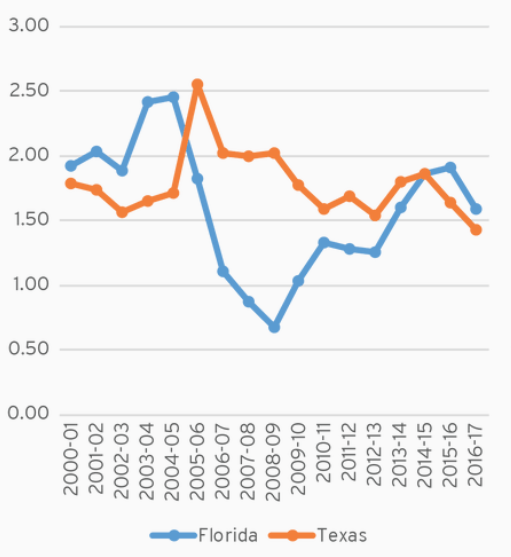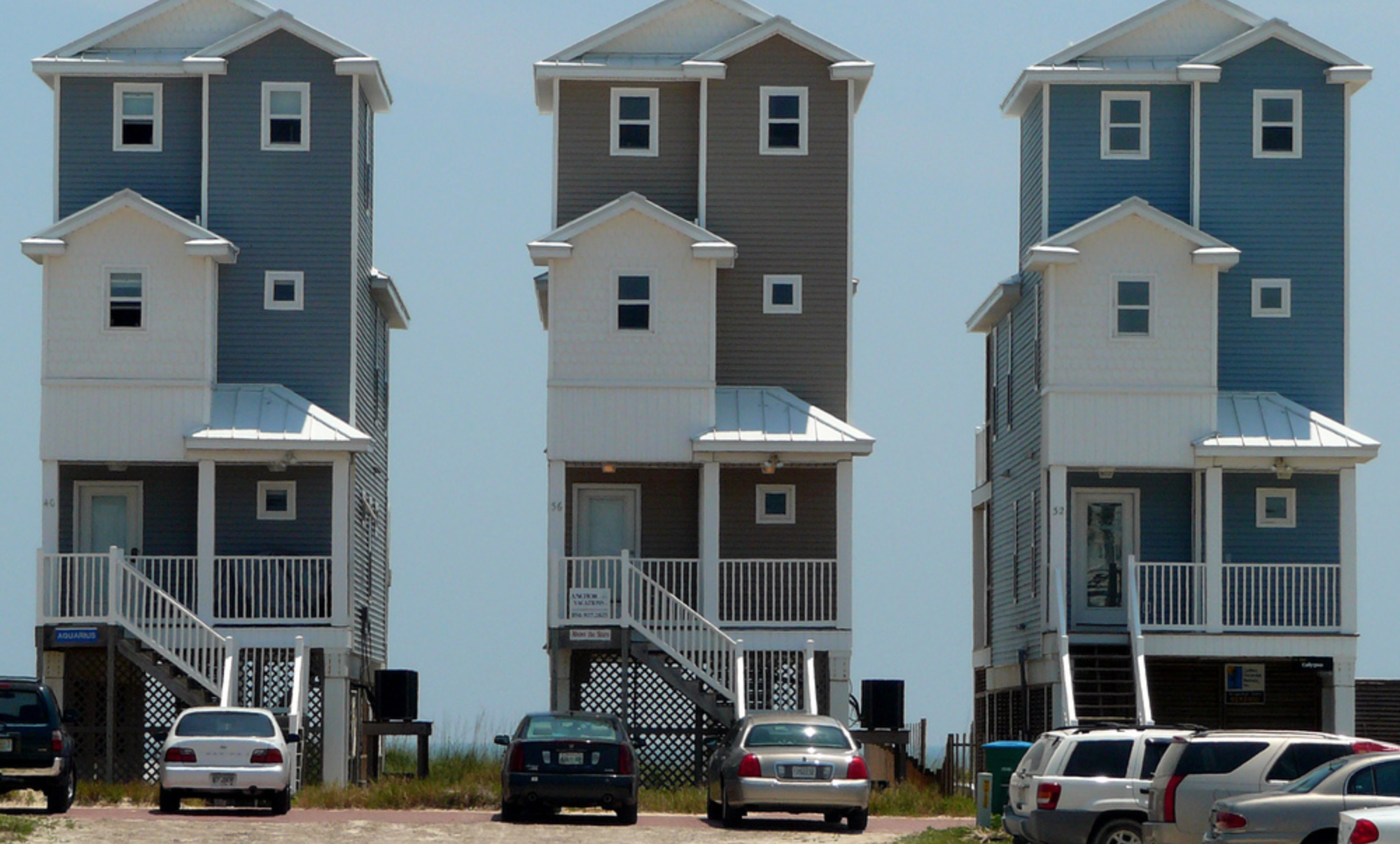Texas added some 400,000 people in 2017, according to recently released estimates from the Census Bureau. Though that was the biggest increase in the country in terms of numbers, the growth rate was actually just the seventh fastest. Indeed, that 400,000-person increase represents a decline in growth rate for the second year in a row for the state, according to an analysis by the Brookings Metropolitan Policy Program. And it’s a trend that holds more or less across the Sun Belt, where the post-recession population boom seems to be mellowing.
Some states, like Georgia, North Carolina and Tennessee, still saw increasing growth rates in the 2016-2017 year, but Texas and Florida did not. “Texas has long exhibited high growth rates, and, by virtue of its size, high numeric population gains,” writes William H. Frey, Senior Fellow with the Metropolitan Policy Program. “Yet, while it faired better than most Sun Belt states during the recession, its recent growth ticked downward.”

Annual population growth. Source: William H. Frey analysis of US Census Bureau estimates, 2000-2017.
Metropolitan Policy Program at Brookings.
For Texas, it was year two of a downward slide in growth rate but Florida was coming off a high mark in the post-recession era when its growth rate dipped between 2016 and 2017.
Houston has seen similar trends. Between July 2015 and July 2016, Houston’s Harris County lost the title of fastest growing county in the country to Phoenix’s Maricopa County, largely due to people moving out of Harris County. But the decline in growth rate still translated to the second largest population gain in the country for that year. The metropolitan area also posted the second biggest population gains that year.
So what does all this mean? Population matters for political representation and according to Brookings, if new projections hold through 2020, “California could lose a seat for the first time in history while Montana would pick up an extra seat.” Though the Sun Belt would gain seven seats, notes Frey, there seems to be important variations emerging within both the Sun Belt and so-called Snow Belt regions, “as migrants relocate to less pricey locales in the Southeast and Mountain West (within the Sun Belt) or away from states with the largest urban centers (within the Snow Belt).”
With oil prices climbing, Houston’s local economic outlook appears sunny enough. But the impact of Hurricane Harvey on housing costs and more broadly on the city’s long-term resiliency might temper some enthusiasm.

